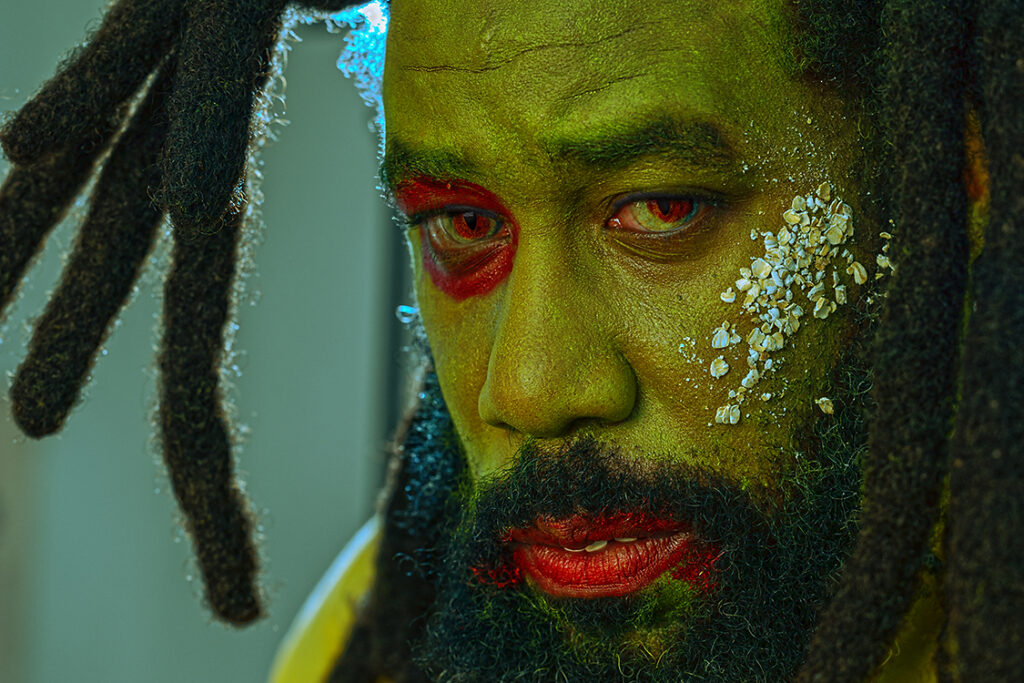Call for Entry Highlight: Humphrey Gets His Flowers
Posted on April 26, 2024
For the 2024 iteration, FotoFocus announced a new Biennial initiative: Call for Entry Selections. These six selected projects highlight talent from the region’s artists and curators as part of the first large-scale regional Call for Entry in the Biennial’s history. Each month leading up to the Biennial, a Call for Entry project will be highlighted. Learn more about Humphrey Gets His Flowers, a combination of archival video, large-scale projection, mixed media collages, and photography. This project will be on view September 27, 2024–November 1, 2024 at Art Academy of Cincinnati: SITE1212.
It was only in retrospect that Michael Coppage realized what he’d been doing 20 years ago was a type of performance art. Back then, taking on different personas was just something necessary for the wellbeing of his mental health. He was a young Black man in Chicago, dating a psychology student, and buckling under the psychic pressure heaped on him by racist surroundings. So he decided to lean in.
One of these aforementioned personas was Prosper Jones, the ultimate hood superstar: a rapper, graffiti artist, and breakdancer into whom Coppage could disappear amid his local crowd. The other was Humphrey Humpkick, who was meant to draw attention to himself and, more critically, to those around him. Humphrey, the leader of Mute-N-Heard (a clever play on ‘mutant herd’), and his crew of three would paint themselves green, embody the societal demons (racism, sexism, beauty standards) they were struggling with, and refract public reaction through grotesque miming. They took their act around the world from 2005 to 2007, before Coppage “retired” Humphrey and took a break from his art practice.
That is, until exhibiting in the 2022 FotoFocus Biennial got him thinking about his past.
“This character was the first time I’d ever told a real story, an autobiographical story, using my work,” he says in an interview. “With that realization, I decided to revive this character as an homage, because he really did help me in terms of how I produced work, but also in that confidence space.”
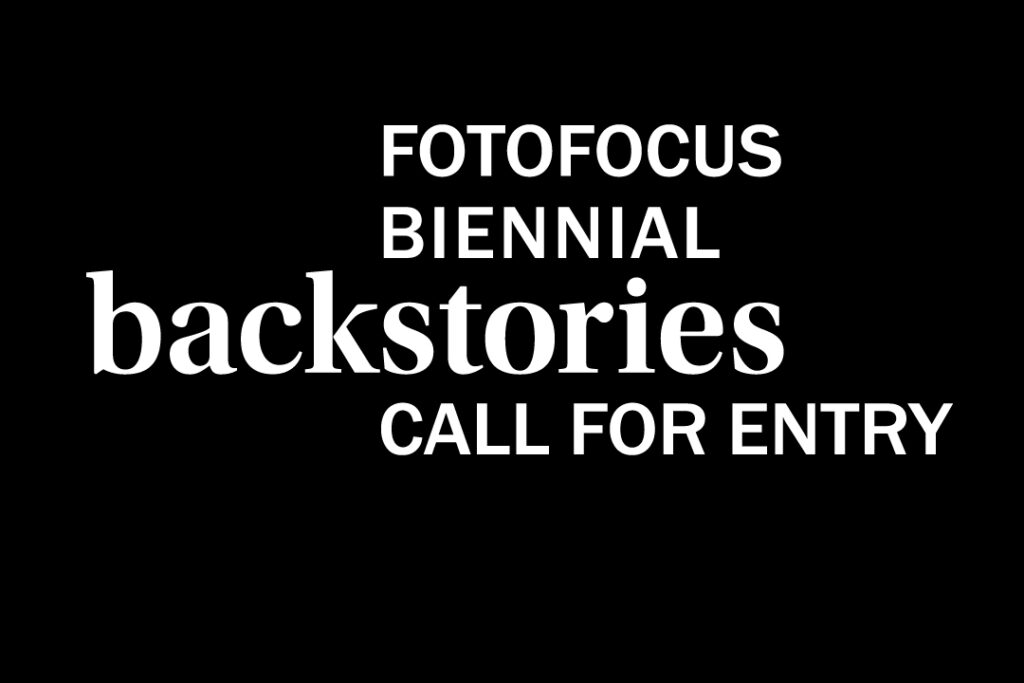
Thus arrives Humphrey Gets His Flowers, a multimedia exhibition that serves as both a commemoration of past work, a catching-up with the titular persona, and what he might be up to in 2024. Incorporating archival images and footage, project-mapped collages, past mementos, and digitally animated, large-scale projections, the exhibition will open at SITE1212, and across screens and billboards in Cincinnati, as a Featured Project in the 2024 FotoFocus Biennial.
The theme of the upcoming Biennial, backstories, dovetailed perfectly with Coppage’s line of thinking—and with the timeline required to grow his hair long enough to attach the 2-foot dreadlocks he’d cut off 15 years ago. He jokes that reattaching them was a 16-hour ordeal, comparing it to a method actor entering a character. Unlike that precarious process, though, Coppage wasn’t scared that it would jeopardize the mental stability he’s long since reached.
“Back then, the performance was about hiding behind the character so that I couldn’t be disappointed by people’s reaction with me because I thought I knew what to expect,” he says. “He became the embodiment of what I felt I looked like when I was out in public as my normal self, so I decided to realize that look and go out as the character.”
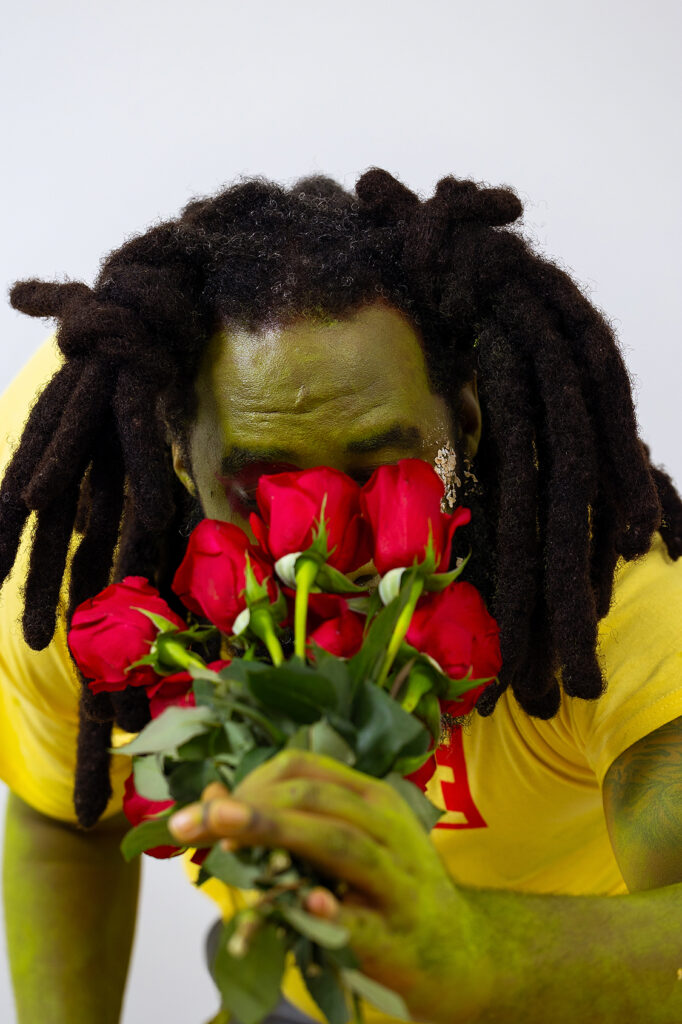
The results were mixed: some people gave him flowers and umbrellas, some punched him in the face, or stabbed his hand. Thankfully, he found “safety in numbers” by going out with friends, but the emotional journey was his own to take.
“I realized that the problem was never me, but about the person doing the projecting,” he says. “I have chosen since then not to carry other people’s baggage. When I have similar encounters—which, you know, haven’t stopped—I’m able to address it and make it a healthy encounter. It’s not a confrontational, emotion-laden response, but more of a therapeutic intervention, essentially.”
Coppage acknowledges how studying mental health—a space in which he first worked in 2003, through his then-girlfriend—fueled his work, referring to himself as, “the first person I helped with a mental health intervention by the creation of this work.”
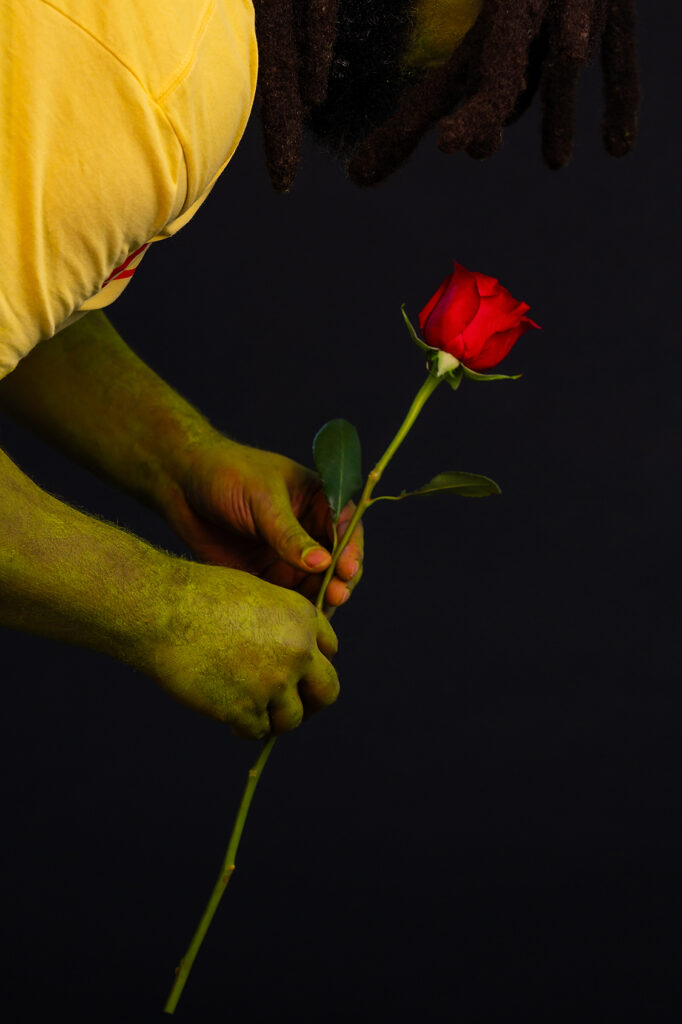
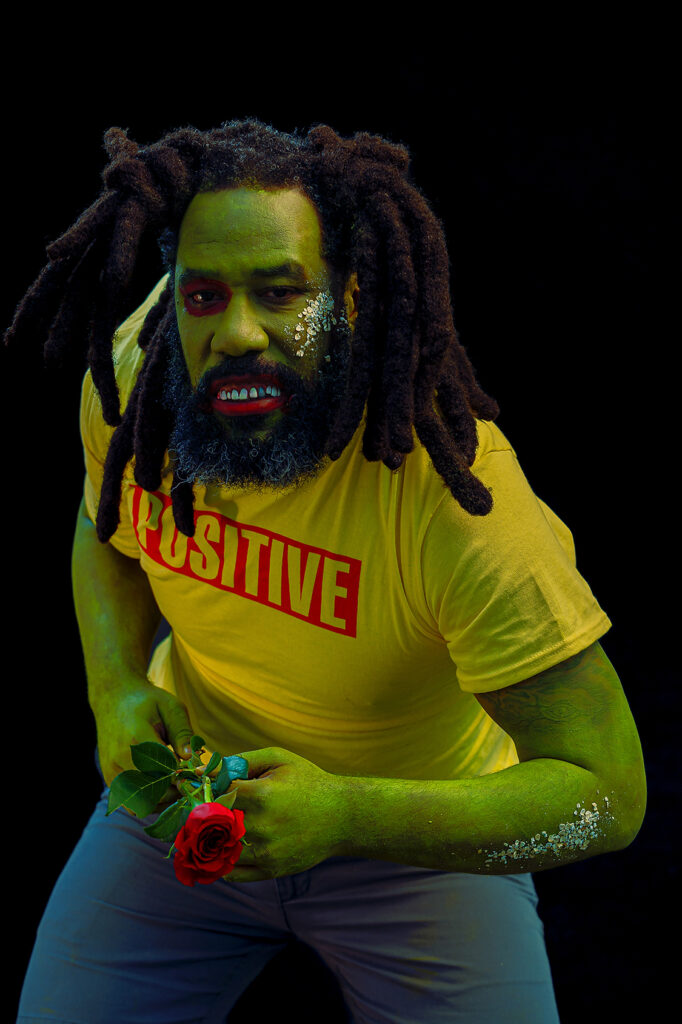
Left: Michael Coppage, Profile of Humphrey with Rose, 2023. Digital print, dimensions variable. Courtesy of Whitney Dixon; Right: Michael Coppage, Portrait of Humphrey with Rose, 2023. Digital print, dimensions variable. Courtesy of Whitney Dixon
“This isn’t something that I would ever be susceptible to again because I just have a completely different mindset and there’s been a shift in my perspective,” he continues. “These things were identified and excised and removed and have not been an issue since.”
Reviewing the footage he’ll present at the Biennial, two other things pop up for consideration.
One is the quality of the video which, juxtaposed against the hi-res digital animation he has mapped onto it—objects disintegrating, shifting, and reconstituting themselves—proves, “what an idea can become if you don’t give up on it; if you continue to push it and walk it out, it can go from this grainy, kind of immature, poor-quality thing to a really polished work that could show in any contemporary space.”
The other is that, as he puts it: “I would have gone viral years ago if social media was where it is today. I was kind of at the forefront; doing things that make sense today but, back then, we didn’t have the social infrastructure to do some of the things we can now.”
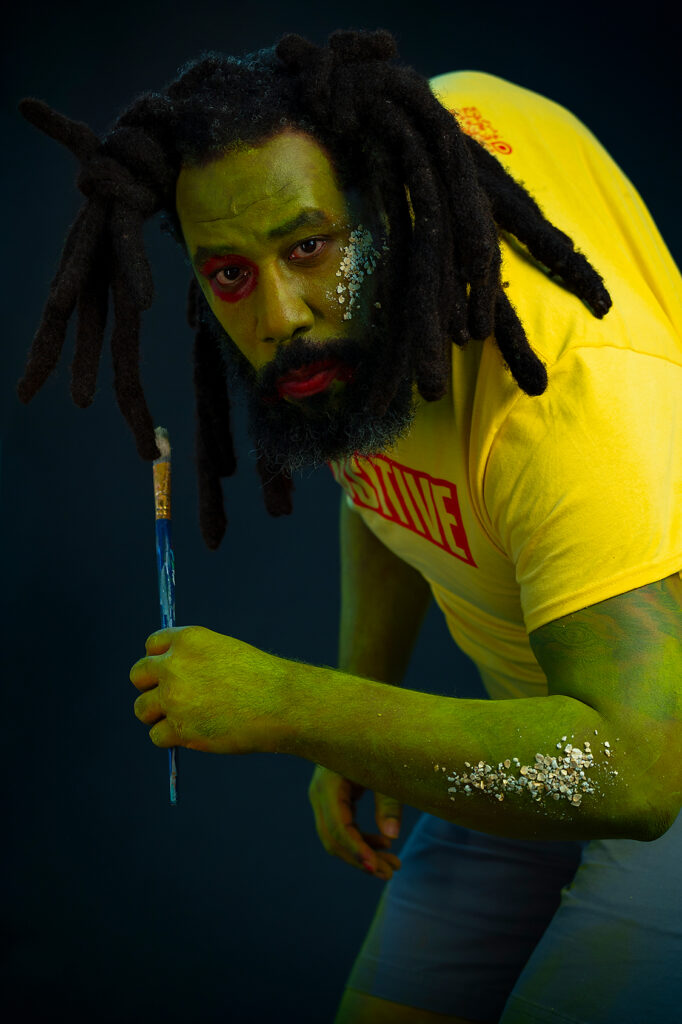
What did Humphrey get up to in the intervening 17 years? Coppage isn’t sure. He grew up out of view, he explains, and the artist hasn’t thought about him much since 2007, after which he stopped making art and took any chance to travel abroad—that is, until 2015, when he started flexing his creative muscles again. He says Humphrey’s still the man he remembers, though he’s shed the cardboard shackles he then carried around his neck, wrists, and legs; an evolution from “the bondage of his being othered,” as he puts it.
“It started out as a performance because I needed to kind of purge a lot of internalized experiences that affected my mood and self-esteem and my confidence,” he says. “The performance really moved me from this fragile, young person to a place of confidence. It really contributed to the way that I carry myself today.”
His work with FotoFocus also represents a new era for Coppage and the way he views his practice. He’d never considered himself a photographer until someone pointed out that his lens-based work richly qualifies under the organization’s broad definition. As he closes the door on the Humphrey project, the lenses he’s used to capture his work, which itself captures the contemplation of everyone who encounters it—himself included—can now become blissfully foggy; a new tool. The lens, a window, becomes what it always was for Coppage: a mirror to reality, and to a darker past.
